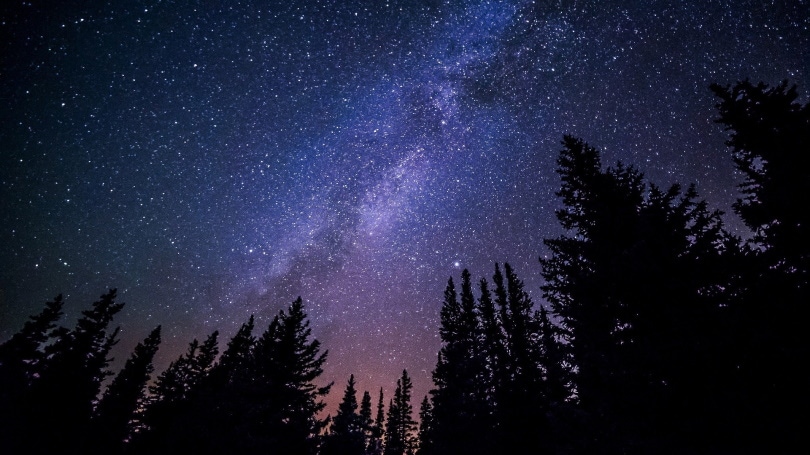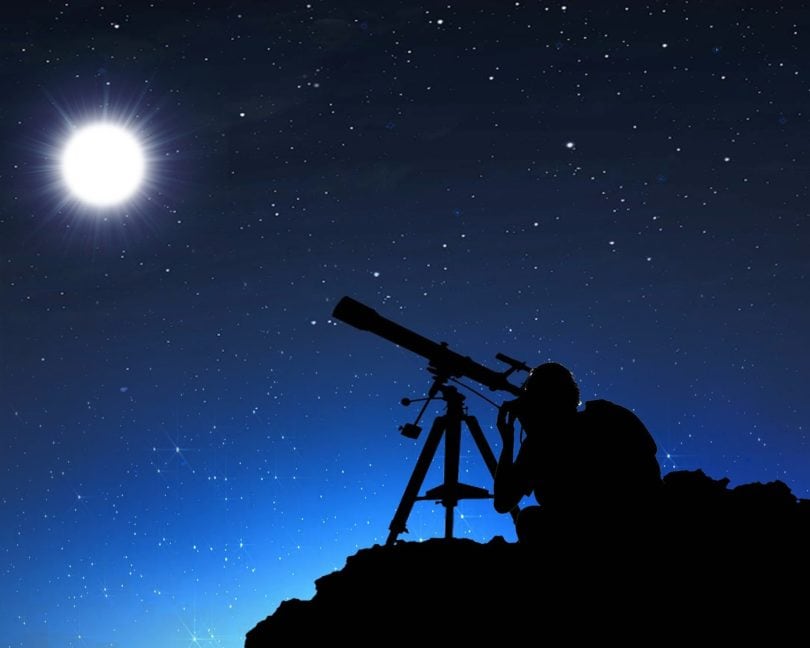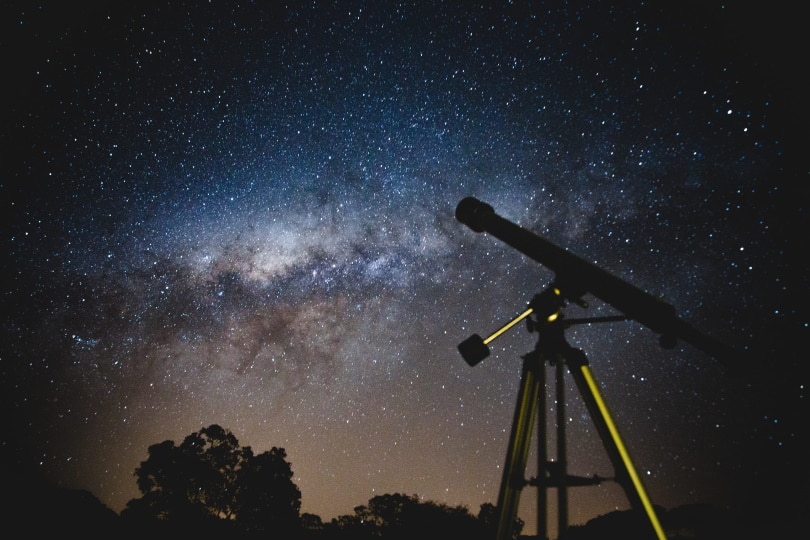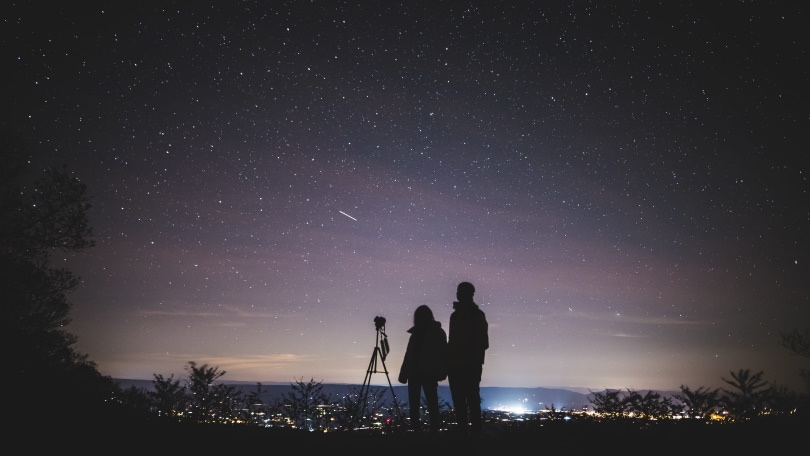What Colors Are Stars? [Astronomer’s Guide With Color Chart]
Last Updated on

There are few things more awe-inspiring than looking up at the night sky. But the longer you do, the more questions that you’ll probably have, like what colors are stars? What does it mean when stars are different colors?
We break down everything that you need to know and give you a few tips on how to photograph colored stars.

Why Are Stars Different Colors?

Two different factors affect what color a star is. First, movement has a significant impact. As an object moves away from you, it “redshifts,” moving farther to the lower end of the color spectrum.
However, if an object is moving toward you, it blue shifts, moving toward the higher end of the color spectrum. From there, the color of a star can vary depending on the temperature of the star.
The hotter a star is, the more it shifts to the higher end of the color spectrum. That’s why blue-colored stars are actually the hottest, with a temperature range of 30,000 to 50,000 Kelvin.
As a star cools, it shifts to the lower end of the color spectrum, with a red star ranging between 2,000 and 3,500 Kelvin. If this seems backward to you, think of a fire. The outer cone is red, and while that’s hot, it’s not nearly as hot as the center of the fire, which almost always burns blue.
Star Color and Temperature Chart
| Class | Color | Temperature Range (Kelvin) |
| O | Blue | 30,000–50,000 |
| B | Bluish White (Light Blue) | 10,000–30,000 |
| A | White | 7,500–10,000 |
| F | Yellowish White (Light Yellow) | 6,000–7,500 |
| G | Yellow | 4,500–6,000 |
| K | Reddish Orange (Orange) | 3,500–4,500 |
| M | Red | 2,000–3,500 |
Source: https://bit.ly/3bHSRQx
What Colors Are the Hottest and Coolest Stars?

There’s no doubt that the hottest stars look blue in the sky. A blue star can burn as hot as 50,000 Kelvin! Meanwhile, the coolest stars appear red and can be as cool as 2,000 Kelvin.
While movement can have some effect on color, a star in the lower temperature range won’t suddenly start burning red, and an extremely hot star won’t look red — at least, as long as it’s in the Milky Way.
That’s because while almost every other galaxy is moving away from us, most stars in the Milky Way are at a stable distance. That means, for the most part, we can disregard movement impacting color.
What Colored Stars Can We See From Earth?

While there are plenty of stars in the sky, you might wonder why they all appear close to the same hue if they have such a wide range of colors. The answer is that they’re not!
But to really see the differences, you’ll need to head somewhere with little light pollution, have good seeing, and avoid the stars near the horizon line, where Earth’s atmosphere will disrupt your view the most.
If you have all these conditions, you should be able to see stars across various points of the light spectrum in the sky. But if you can’t, all you need is binoculars or a telescope to get a better view of the night sky and see the different hues.
However, keep in mind that neither a telescope nor binoculars will make up for poor seeing. That means if you’re in a heavily light-polluted area or there’s too much atmospheric turbulence, it doesn’t matter how much you magnify the night sky or a specific star, you won’t be able to see the different hues that they give off.
What Color Is a Dying Star?

Singling down the color of a dying star is no easy task. That’s because there are tons of different types of stars, and the temperature of a star has a significant impact on how long it will last.
So, while all blue or green stars are young, that’s because they burn through their hydrogen quickly before going supernova.
Still, when most people talk about dying stars, they’re talking about orange or red stars. These are typically average-sized stars nearing the end of their lives because they’re running out of hydrogen. This process can take millions of years, but eventually, these stars turn into red giants.
The Best Way to Photograph Colored Stars

There are few things as fun and as challenging as astrophotography. You can’t simply point your camera phone at the sky and capture detailed images. Instead, you need a camera that allows you to tweak the settings, and you should also invest in a high-quality tripod. That’s because the first trick for photographing the night sky is exposure time.
Taking photos is all about bringing in light, and there’s not a ton of it in the sky. But you can make up for this with longer shots. Anywhere from 25 to 30 seconds should do the trick, but if you’re looking for photos of individual stars, you might have to wait even longer.
However, you need to keep your camera as still as possible to capture these images. Otherwise, all you’ll have is a blurry photo!
Just like stargazing, you need to find the right conditions for astrophotography. That means good seeing and low light pollution. In fact, even the moon can be too much for those trying to capture grand images of the night sky!
So, pick the right day and the right location, and you’ll have far better results. From there, you’ll need a ton of practice and experience. You can capture star color in everything from individual shots to full night sky photos and even star trails!
Getting the right settings on your camera is key, but it changes depending on what you’re trying to do. So, experiment and have fun with it!
- See also: What Was Observingsites.com About?
- You might also like: What Is Texas’ State Bird? How Was It Decided?
- You might also like: 10 Common Backyard Birds in Arizona (With Pictures)

Conclusion
If you’ve never taken the time to truly appreciate the night sky, you should do so! Head somewhere with little light pollution and look up. To realise the different colors of the stars is an incredible experienc.
You might be surprised by what you see and the questions that it brings up. If that’s the case, come back, and we’ll be glad to clear things up for you!
Featured Imaged Credit: Pixabay
About the Author Robert Sparks
Robert’s obsession with all things optical started early in life, when his optician father would bring home prototypes for Robert to play with. Nowadays, Robert is dedicated to helping others find the right optics for their needs. His hobbies include astronomy, astrophysics, and model building. Originally from Newark, NJ, he resides in Santa Fe, New Mexico, where the nighttime skies are filled with glittering stars.
Related Articles:
15 Crucial Facts About Ultraviolet Rays & the Sun
What Constellation Is Spica In? The Interesting Answer!
10 Interesting Leo Constellation Facts, Myths, and FAQs
15 Interesting Pegasus Constellation Facts, Myths, and FAQs
6 Interesting Sagittarius Constellation Facts, Myths, and FAQs in 2024!
What Are Constellations? Where Did They Come From?
8 Interesting Libra Constellation Facts, Myths, and FAQs
What Is Infrared Radiation? Science-Based Facts & FAQ
